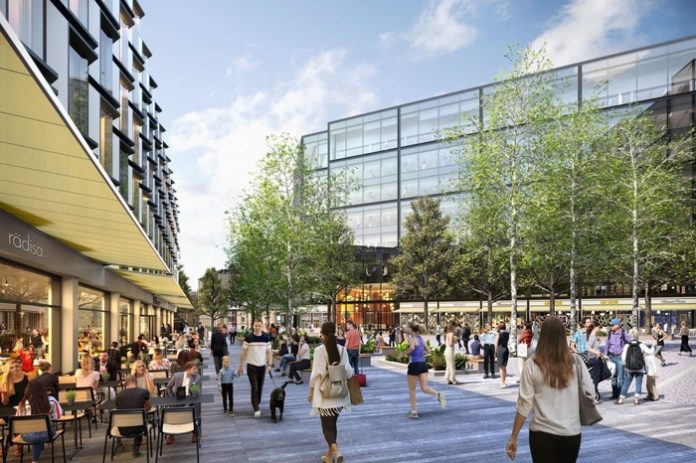Leading independent property advisory firm, Lismore Real Estate has released its review of the Scottish investment market for the third quarter of 2021.
After a significant increase in quarter two, transaction volumes have marginally increased with £350m traded in quarter three, although this is 30% below the five year average.
Edinburgh continues to attract overseas investment for prime office assets; whilst value add has been the order of the day in Glasgow. There has also been a noticeable bounce for the previously beleaguered leisure market, with restaurants and bars benefiting from the increased footfall following the re-opening of offices.
Top deals of the quarter included Union Investment’s £78.6m acquisition of Princes Exchange and New Uberior House in Edinburgh from MAS Real Estate and Realty Income’s £86.5m retail park purchases from Baumont and Ediston.
Chris Macfarlane, Director of Lismore said:
“The quantity of stock coming to the market remains restricted; however with a number of significant deals under offer, we expect the volume traded in quarter four to be significantly higher.”
With COP26 being held in Glasgow next month, there is only one show in town, with the spotlight of the property sector firmly placed on the environment and climate change like never before. As part of the quarterly review, Lismore surveyed a wide range of investors to assess the impact of sustainability with purchase considerations and market pricing.
Sustainability in the top 3 investor purchase decisions
Lismore research has clearly shown sustainability as being one of the key investment considerations – rated as the third most important purchase consideration by 74% of respondents.
The majority of respondents believe sustainability carries a pricing premium of between 25 bps (48%) and 50 bps (37%). There was also a widespread acknowledgement of the impact on yield, with 91% of respondents indicating a yield premium of 25 bps or greater. With the relentless advancement of sustainability criteria, the yield gap and yield premium of best in class is likely to widen further.
Lismore’s research findings showed that 67% of respondents anticipate that the office sector will experience the greatest impact from sustainability, with retail and industrial expected to be impacted least, at 37% and 47% respectfully.
The office sector, in particular the prime end, is most in focus – driven principally by corporate occupier requirements for staff well-being but also to meet their net zero carbon pledges.
A prime example of sustainability credentials within the new build office sector is the Haymarket in Edinburgh, being developed by Qmile Group.
Paul Curran, Chief Executive Officer of Qmile Group, comments:
“The drive on sustainability and wellness has been at the core of the Haymarket development brief since day one and the masterplan set out to create a place that was inclusive not only for occupiers and commuters but for the local community.
“We have noticed a dramatic change in the expectations of occupiers and funders/landlords over the last decade, where some buildings will not be considered by an occupier or funder if key environmental criteria are not being achieved.
“The ESG demands of organisations are no longer a nice to have but something that is required of them by investors, clients and staff.
“Prospective occupiers now understand the benefits to their organisation of having a sustainable building and are willing to pay a rent premium to secure the best buildings in the best locations to attract and retain talent to their business.”
Chris Macfarlane adds:
“The bottom line is that sustainability is here to stay and its influence on assets from an investment perspective is becoming ever more pronounced.”
“The more sophisticated investor pool (UK and overseas Funds, REITS, listed Property Companies and established Investment Managers) are all totally in tune with the sustainability agenda and aiming to play their part in driving it.”
The effect on pricing and liquidity sees a range of influences across different sectors. The prime office sector is seeing an emergence of a tiered market, with the very best (greenest) buildings able to attract strongest interest from European and Global Funds, who are usually most competitive on price.
Placing a pricing differential on this sector against other less green buildings is difficult but what is definitely occurring is that unless the building is ticking all of the sustainability boxes, the target market is thinner and the chances of achieving a premium price are reduced.
In other sectors including industrial and retail warehousing, the immediate effect seems less pronounced, however, it is only a matter of time before these sectors catch up – particularly in new development which is already seeing significant sustainability improvements.
There remains a serious appetite from sophisticated investors to fulfil their ESG credentials, so the opportunity for Green Funds can only continue to grow.
Elsewhere, developers who acknowledge the sustainability agenda and build it into design will benefit, not only from improved tenant demand perspective, but also from wider investor appeal on exit and ultimately the strongest possible pricing.















